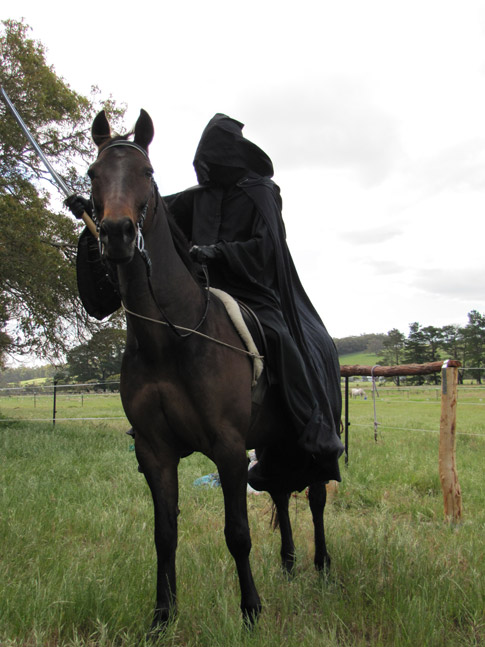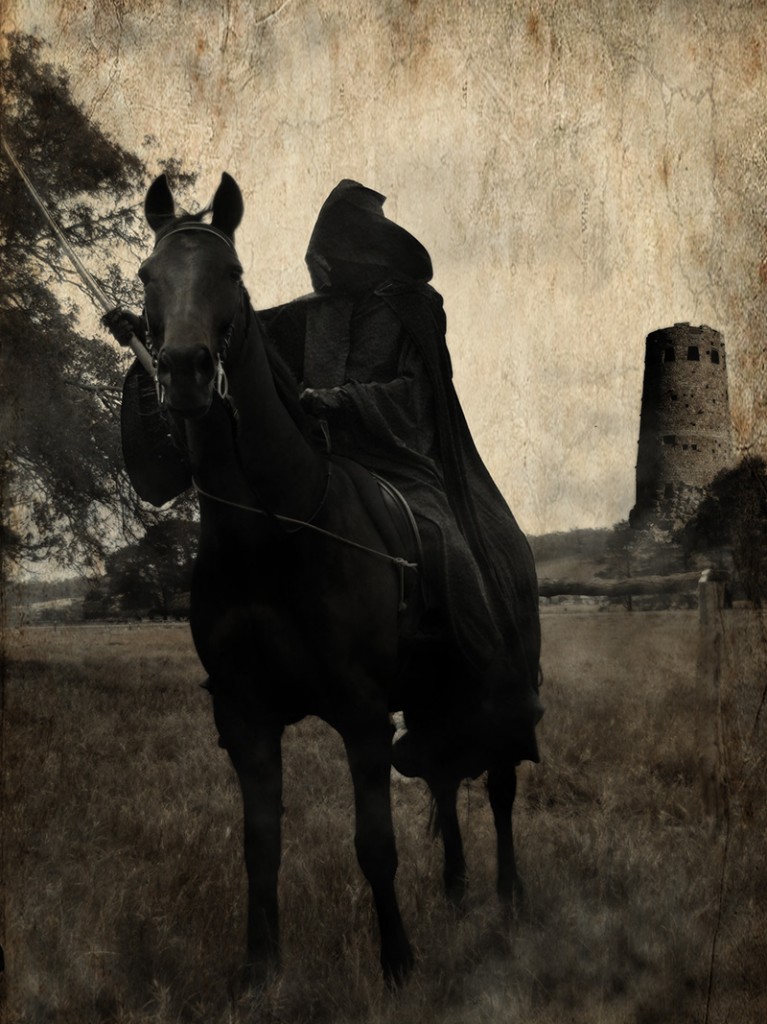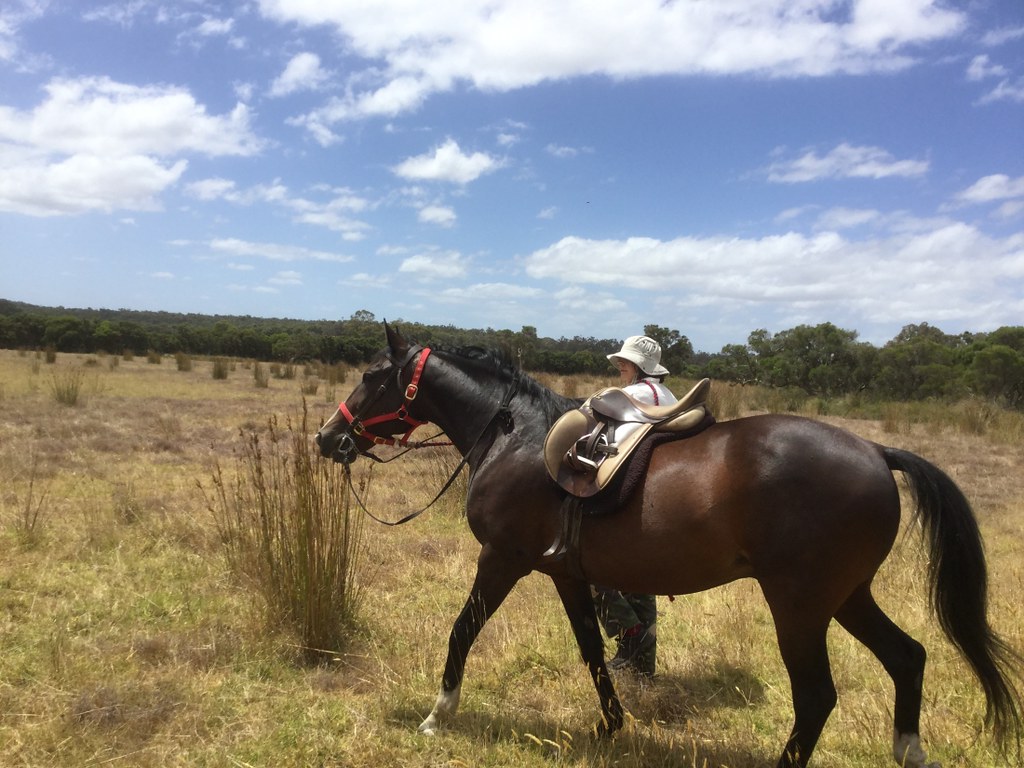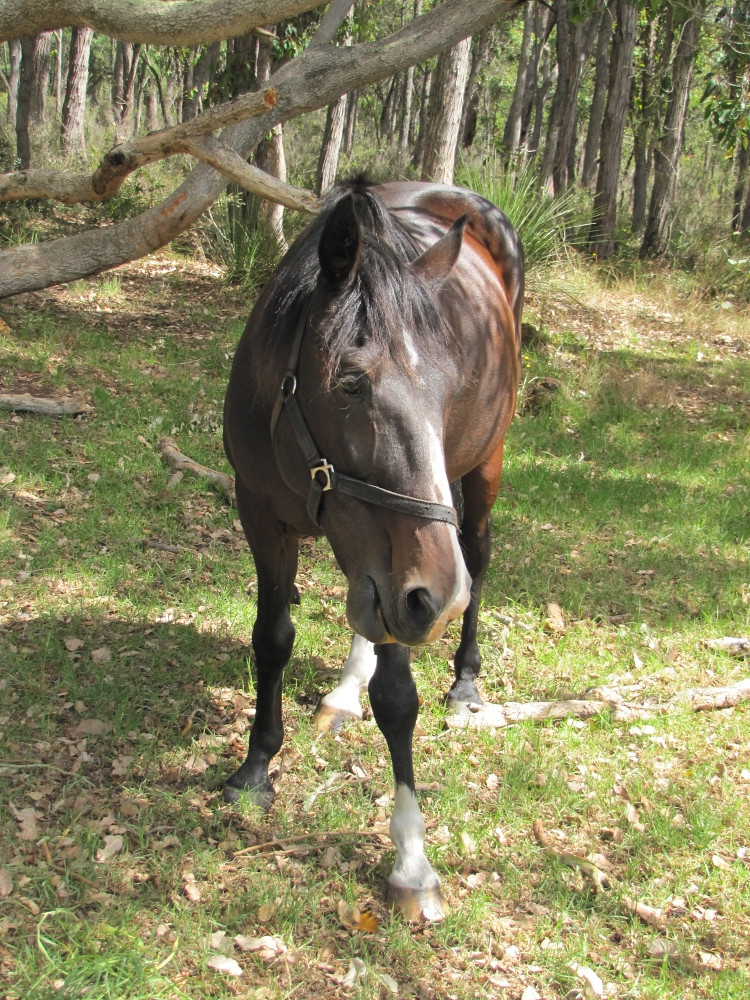Where to begin.
In 2010, we were both working in professional positions and were in the process of making offers on houses in a small coastal town nearby when we had a curveball thrown at us. There was a 62 hectare rural lot in the hinterland in our price range: 50 hectares of beautifully preserved, highly flammable Australian sclerophyll ecosystem, and 12 hectares of pasture currently running beef cattle.
It was, miraculously, in our price range, because the price reflected that properly managing 50 hectares of native vegetation is time-consuming, expensive and requires specialised skill sets and a ton of passion, while providing zero economic return. It turns out that I have a science background that includes ecology and my husband has extensive experience at preventative fire management, which is totally necessary in Australian sclerophyll - and had been conducted for over 30,000 years by Australia's Indigenous people, in a very different way to the combination of neglect and overburning that has characterised post-colonial management of Australian fire-adapted ecosystems.
It was off-grid, with nothing but bushland and mostly bare, wind-blown pasture. It also turned out we were bloody-minded and into DIY, nudging 40 and able-bodied. So what we did is buy the place, put in the necessary amenities, plant shelterbelts in the pastures by hand, and design and owner-build our own eco-house on a shoestring budget we firmly stuck to (we're neither of us high-income earners, nor did we rob a bank or win the lottery or come into an inheritance - we just know how to do frugal in order to save up for things). This is what it all looked like coming up to ten years later - in the middle of a summer drought, after three years of getting less than 60% of average annual rainfall:
Kindly provided by a guest with a drone
We've since had an apocalyptic winter that flooded much of the South Coast, washed away bridges and roads, gave pasture animals footrot and killed some of our fruit trees and tagasaste hedges.
It's been quite a journey. Looking at the clip I can see why we've been so busy since we bought the place. We're now downshifters living off-grid via solar panels plus four bottles of camping gas a year for cooking, and we grow much of our own food (F&V, beef, honey - and getting pastured eggs and milk from neighbours). My husband works in town four days a week and I run the smallholding and an eco-farmstay, and write. We'd never have imagined we would end up doing this, but here we are. It was our chance to save 50 hectares of native ecosystem that goes all the way back to ancient Gondwana from being cleared for "development" or overrun with goats or otherwise degraded.
Here's some of the flora and fauna in the area we are stewarding:
Red Moon Sanctuary Flora and Fauna
Because of the pasture, I was able to retire an old mare I'd had since childhood at our own place for the last three years of her life, and keep my (ex-harness, DIY re-educated) riding horse here too. The Donkey Society got in touch with me about a group of donkeys with special healthcare needs (two obese, one blind) and we adopted those in 2012:
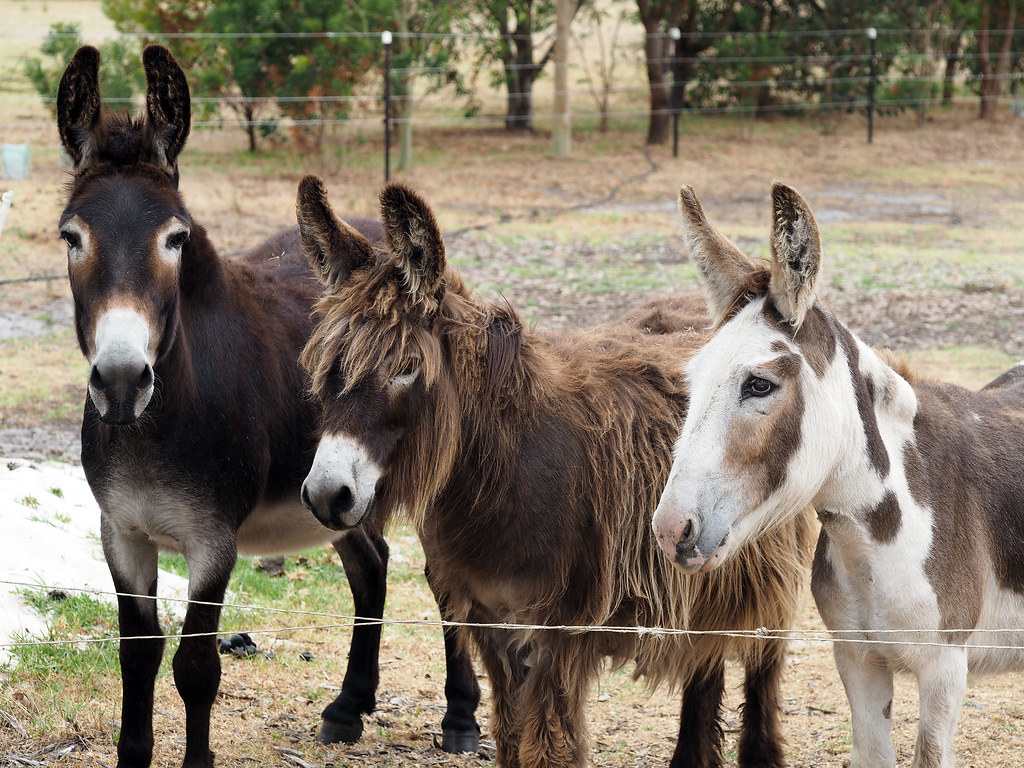 Don Quixote, Mary Lou, Sparkle
Don Quixote, Mary Lou, Sparkle
...and another two from a neighbour three years ago (and now we don't need any more, thank you very much - I trim all the horse and donkey hooves every 4-6 weeks and have enough arthritis already).
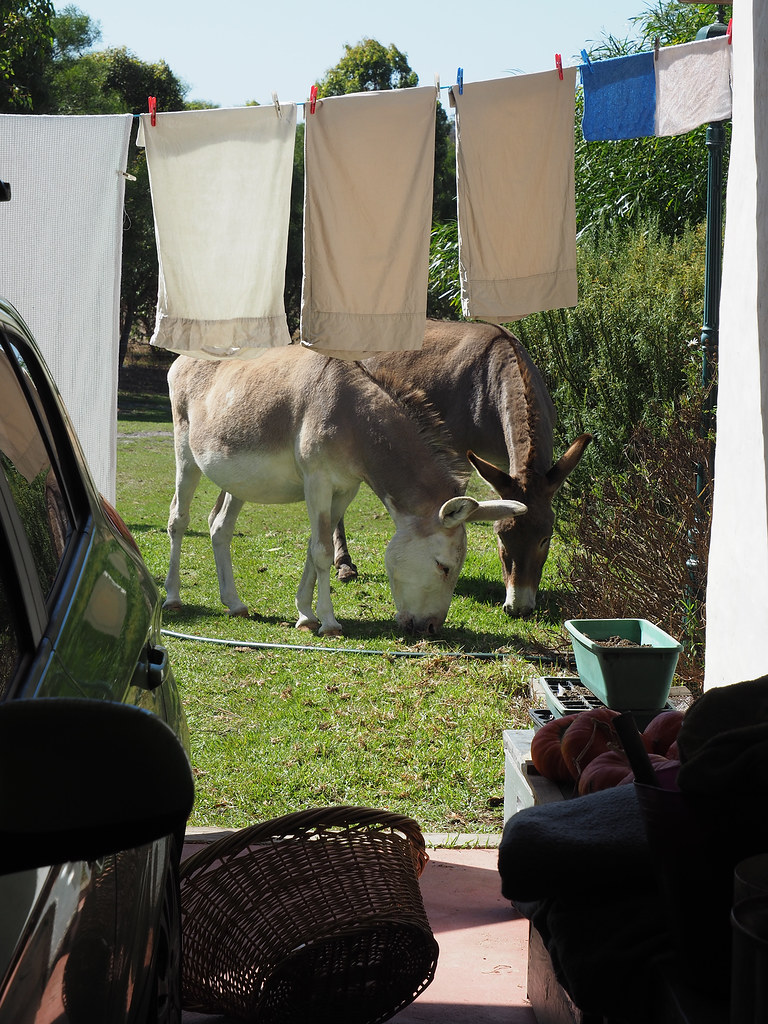 Nelly & Benjamin on wash day
Nelly & Benjamin on wash day
I also had the chance to retire some old harness-racing horses I felt sorry for, that I'd known since they were young and had helped to educate in my summer breaks. (I really loathe horse racing for all sorts of reasons, but enjoy working with horses and being around them, and going on adventures with them, and maybe doing a bit of "ballroom dancing" with horses that enjoy it.)
These adopted horses went from living in dry lots and stables with hand-fed hay and concentrates, most of them solitary, to living free-range in a herd at our place, with a WIWO shelter and rugging during wet, windy, cold conditions. It's been really lovely to see them enjoy their golden years here.
At various stages we had to put old horses down.
My mare (cancer, 32) - 27 in this photo:
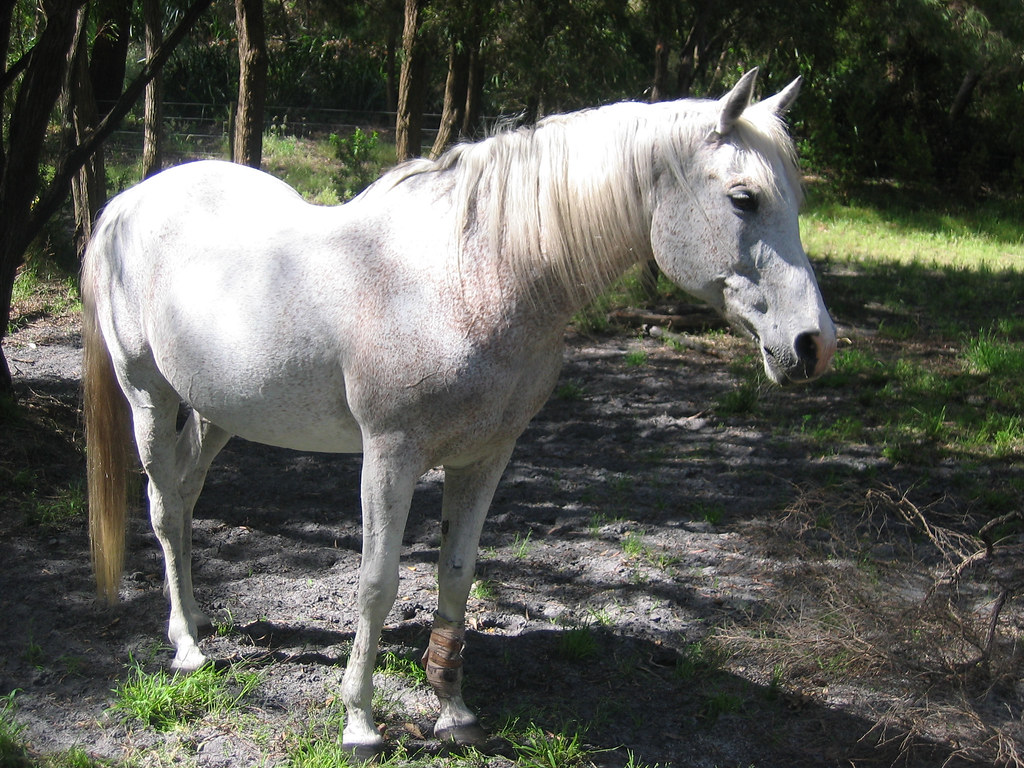
...and on a special beach outing when she was 27:
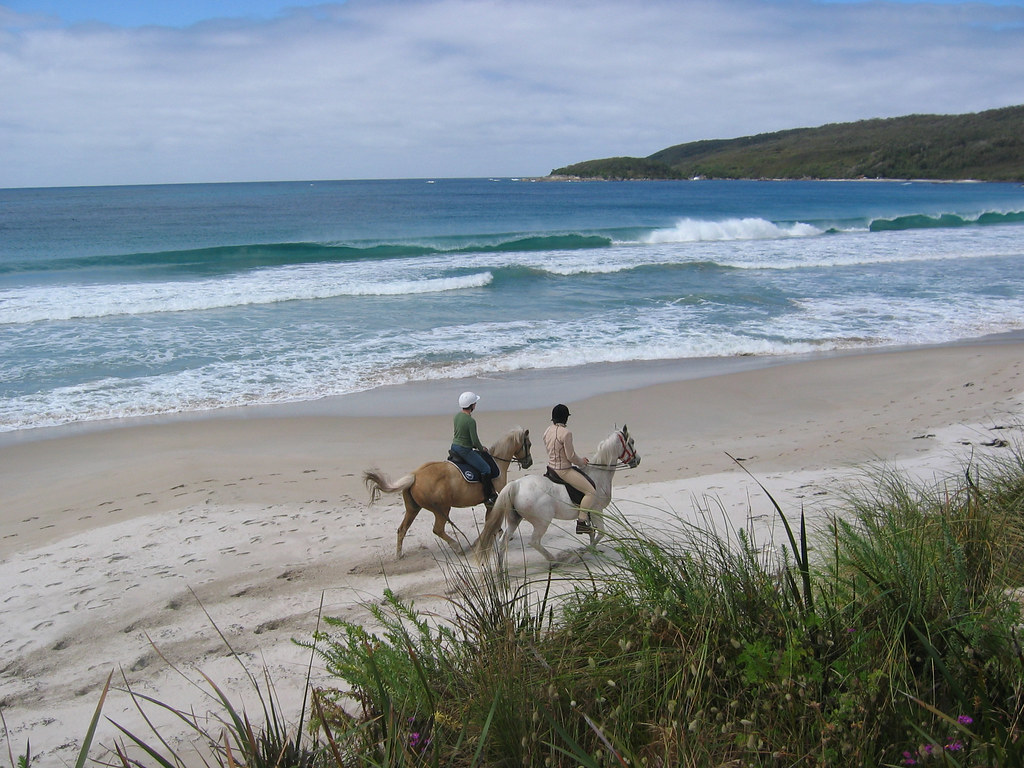
Romeo (34, no molars left in lower jaw, geriatric), who spent his last five years with a free access pass to our garden, photo at age 33:
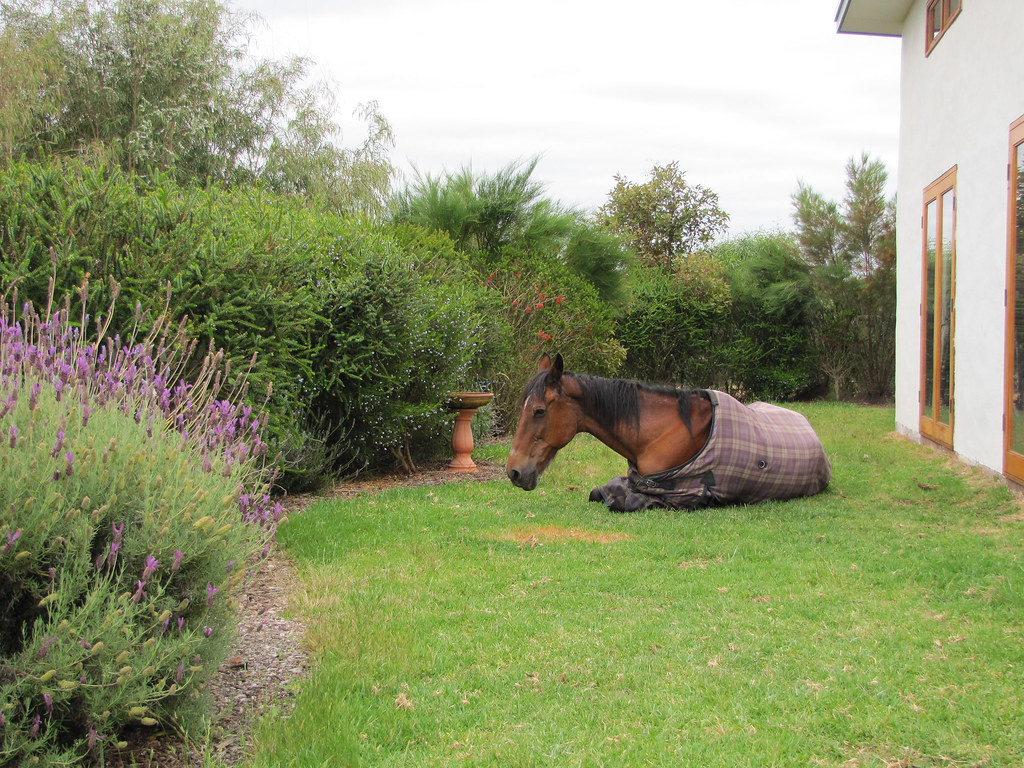
Another mare (28, pituitary tumour) who was the dam of the ex-harness horse I had adopted to ride, pictured here at our place in 2016 with her chocolate-coloured son Sunsmart (named for his habit of always finding shady spots to rest in from when he was little) and her full brother in the background:
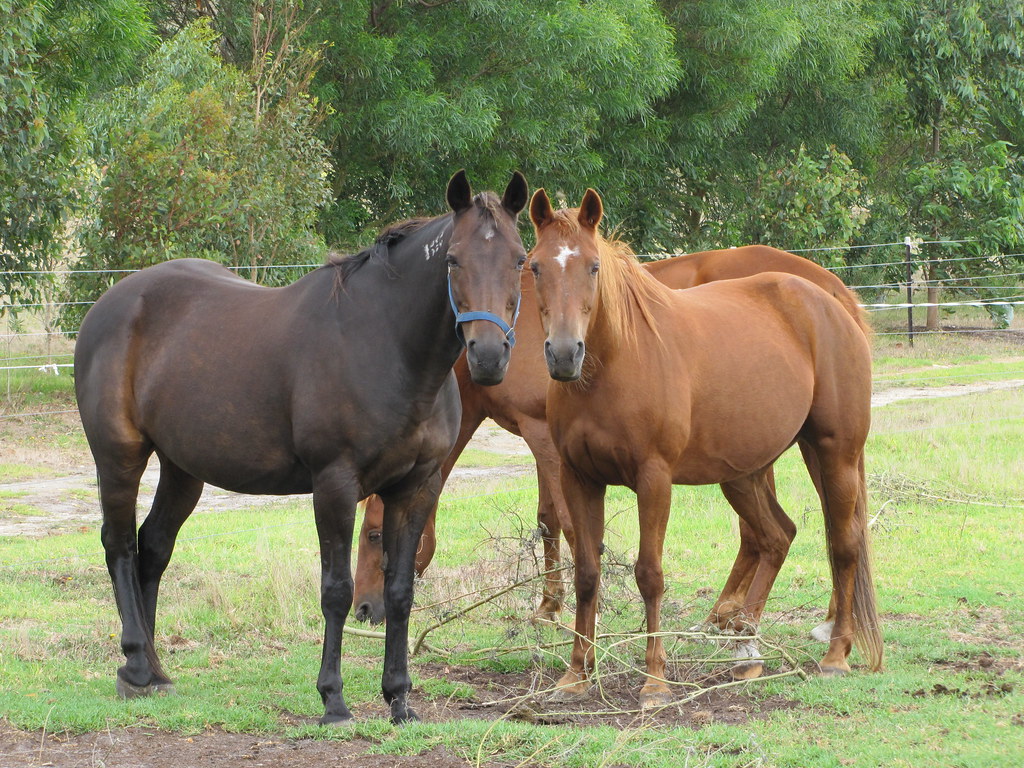
This was Sunsmart and me in 2015, when we were still in the middle of building our farmhouse...
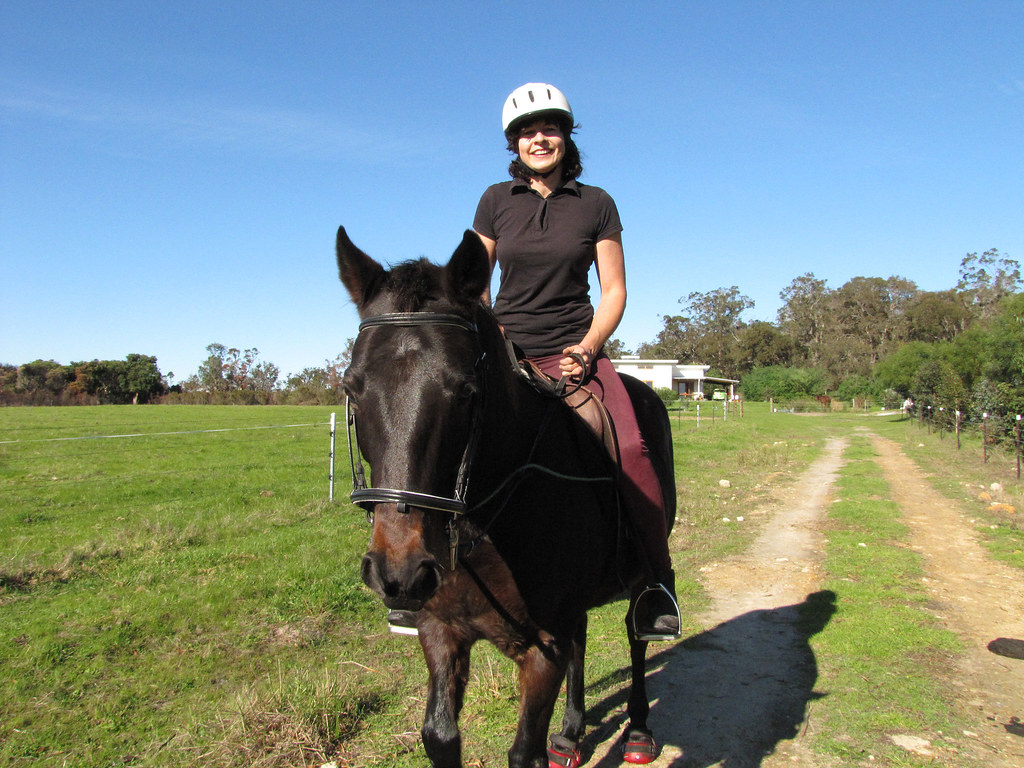
And this is a photoessay of a ride with him through the Australian sclerophyll, with ecological commentary, from 2019:
Aussie Trail Outing With Camera – Sue Coulstock
Late last year I had to put this horse down two days shy of his 25th birthday, after a three-year war with Cushings. He was put on medication after an early diagnosis to try to curtail the development of symptoms, and initially it seemed to work, but the following summer he rapidly started developing serious problems with electrolyte balance and thermoregulation and dropped weight rapidly. We tripled the medication but he kept falling down into a hole, and then, incredibly, after looking absolutely terrible, he recovered five months later, and even got back to 95% of his previous physical condition and levels of fitness. We were riding again with the dog and him chasing each other up the hills at rocket speeds. That lasted about a year - and then he went downhill again. This time he didn't recover and we called time for quality of life reasons - he'd had enough and it wasn't fair to keep trying and hoping.
I found out the morning after he died that Australian Indigenous icon David Gulpilil had died on the same day, also of chronic illness in advanced years. It was sad and yet strangely comforting that they went together. I wrote about that here:
The Kingfisher, the Horse, and being on Country – Sue Coulstock
In the next post I will introduce Julian.


